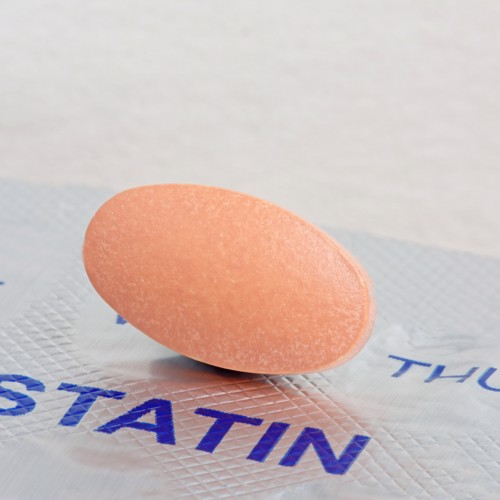Roll up, roll up! Who wants a statin?
NO
PHARMACEUTICAL INFLUENCE
Roll up, roll up! Who wants a statin?

It’s impossible to open a newspaper or turn on the television without hearing mention of the current crisis in the NHS. This doesn’t make the most auspicious backdrop for the release of the new NICE draft guideline on ‘Cardiovascular disease; risk assessment and reduction, including lipid modification’, given the eye-catching new recommendation that we should now ‘consider’ 20mg of atorvastatin as a primary prevention measure for people whose 10-year cardiovascular risk score (e.g. QRISK3) is less than 10%. This applies where a patient has a strong preference to take a statin or the clinician thinks the risk of cardiovascular disease may be under-estimated, such as in people with autoimmune disorders, HIV or those who have recently stopped smoking.
Why have NICE made this change in recommendation? Well, their review found evidence that high-intensity statins were a cost-effective treatment to reduce the risk of major cardiovascular events over a 10-year timeframe across all age-groups (40 to 80 years old) and cardiovascular risk scores (QRISK score 2 to 40%) analysed. In fact, younger people with a QRISK score below 10% may particularly benefit from lowering their cholesterol from an early age given this would reduce their risk of future cardiovascular events over a longer time period. Recent evidence also provides reassurance about the low-risk of harm from statins, with only a small increase in risk of rhabdomyolysis, muscle pain, raised liver transaminases or new-onset diabetes. So, at a population-level, statins are an efficacious, safe, and cost-effective treatment option, even among relatively low-risk groups.
However, this change in recommendation could make as many as 15 million more people eligible for treatment with statins. At a QRISK threshold of 5%, the number needed to treat is 50, i.e. 100 people need to be treated to prevent 2 major cardiovascular events over 10-years. Does the NHS have capacity in the system to provide all these additional patients with the ‘adequate time’ NICE recommend to discuss the pros and cons of statins and then review and up-titrate treatment in people whose non-HDL cholesterol does not reduce by 40% (NB couldn’t we just have an absolute value for the non-HDL target?!). All those extra appointments don’t sound like good news for the GP wait list times that the Government are so concerned about!
Statins in the water then? Well, NICE do suggest that lifestyle changes should be made before medication is considered for cholesterol reduction. The guideline also emphasises that we should focus our effort as GPs on increasing the proportion of people treated among those with a higher QRISK score, given they have most to gain from cholesterol reduction. Only 56% of people with a QRISK score >20% are currently prescribed a statin. There is also more flexibility in the guideline around a starting dose of 40mg of atorvastatin for these higher-risk patients to try to achieve the targets for cholesterol reduction more quickly.
I think the devil (as always!) will be in the detail around how the final version of the NICE guideline is implemented. Unfortunately, a major issue may be looming given EMIS are set to remove integrated Qscores from their systems on 1st April 2023. This follows an MHRA warning that the QRISK algorithms are considered a type of medical device software that are not being maintained to the necessary standards, since the switch from the use of Read codes to SNOMED CT.
Maybe the answer is for greater access to statins for patients on the high street and off-prescription, given their reassuring safety profile? It is likely that that these draft recommendations will change when the final guideline is published. Whatever happens, let’s hope that we can find a solution that doesn’t mean us manually calculating QRISK scores and subsequent changes in non-HDL cholesterol levels for thousands of low-risk patients! We have more than enough to be doing as it is….
Dr Nick Jones
19th January 2023
Join us at one of our upcoming courses or live webinars

Recent NB Blogs
Need an immediate update? – all our courses are available on demand
Did you find this useful?
You can quickly add CPD to your account by writing a reflective note about the Roll up, roll up! Who wants a statin? post you've read.
Log in to your NB Dashboard and use the 'Add Reflective Note' button at the bottom of a blog entry to add your note.

